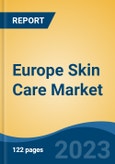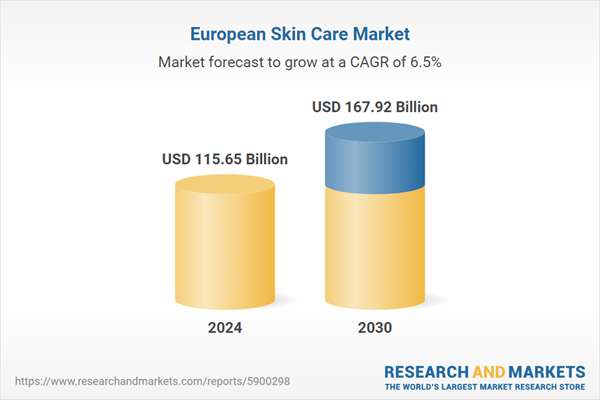Speak directly to the analyst to clarify any post sales queries you may have.
10% Free customizationThis report comes with 10% free customization, enabling you to add data that meets your specific business needs.
According to statistics, Germany leads European countries in personal care expenditure, with a total of approximately €38.99 billion in 2023, followed by France at €32.68 billion and Italy at €28.86 billion. The Netherlands, ranking fourth, experienced the highest year-on-year growth at 5.07%. Germany’s expenditure increased by 2.2%, while Greece showed notable growth at 6.72%. Lithuania, with lower expenditure, saw a significant rise of 9.03%. Luxembourg reported a modest increase, reflecting shifts in consumer preferences across the region. These trends highlight varying growth patterns and changing dynamics in personal care spending across Europe.
Key Market Drivers
Increasing Health and Wellness Consciousness
One of the primary drivers of the Europe Skin Care Market is the increasing consciousness among consumers about health and wellness. Europeans have become progressively aware of the significance of maintaining healthy skin as an integral part of their overall well-being. This heightened awareness extends beyond mere cosmetic concerns; it encompasses the health and vitality of the skin as an indicator of one's overall health. Consumers are becoming more proactive in their approach to skin care, seeking products that not only enhance their appearance but also provide long-term skin health benefits.This shift has given rise to a demand for skin care products that offer protection against environmental aggressors, promote anti-aging effects, and maintain skin hydration and elasticity. Moreover, the desire for natural and organic skin care solutions has gained prominence. Consumers are increasingly scrutinizing ingredient lists, favoring products that incorporate botanical extracts, antioxidants, and other natural components known for their skin-enhancing properties. This trend aligns with the broader movement toward sustainable and eco-conscious consumer choices. ditionally, the concept of 'self-care' has become deeply ingrained in European culture. As individuals seek moments of relaxation and rejuvenation in their daily lives, they turn to skincare routines as a means of self-indulgence. This has fueled the demand for premium and luxurious skincare products, including serums, masks, and spa-like treatments, contributing to market growth.
Key Market Challenges
Regulatory Compliance and Ingredient Restrictions
One of the primary challenges in the Europe Skin Care Market is navigating the complex landscape of regulations and ingredient restrictions. The European Union (EU) has some of the strictest cosmetic regulations globally, and these regulations are continually evolving to address safety concerns and consumer interests. While these regulations are intended to protect consumers and ensure the safety of skincare products. The EU Cosmetic Regulation (EC) No. 1223/2009 imposes rigorous requirements on cosmetic products, including detailed safety assessments, mandatory testing, and strict labeling rules. Manufacturers must invest significant resources in compliance to meet these standards.The EU maintains a list of restricted and banned cosmetic ingredients, including substances that are allowed in limited concentrations. Navigating these restrictions while formulating effective skincare products can be challenging for manufacturers. Additionally, ingredient regulations can vary among EU member states, adding complexity to product formulation and distribution. Regulatory standards are continuously updated to reflect scientific advancements and emerging safety concerns. This means that manufacturers must stay informed and adapt their product formulations and labeling to remain compliant, which can be time-consuming and costly. Strict regulations can sometimes hinder innovation in the skincare market. Manufacturers may avoid introducing new ingredients or formulations due to the uncertainty surrounding regulatory approval and compliance.
Key Market Trends
Rise of Clean Beauty and Sustainability
One of the most significant trends in the European skin care market is the growing demand for clean and sustainable beauty products. Consumers are becoming increasingly conscious of the ingredients they apply to their skin and their impact on the environment. As a result, they are seeking skincare products that are free from harmful chemicals, cruelty-free, and packaged in eco-friendly materials. European consumers are drawn to clean beauty products, which are formulated without parabens, sulfates, phthalates, synthetic fragrances, and other potentially harmful ingredients. Brands that emphasize transparency in ingredient sourcing and manufacturing processes are gaining popularity.Environmental sustainability is a key concern for European consumers. They are looking for skincare brands that prioritize sustainable packaging solutions, such as recyclable materials, minimal packaging, and refillable options. Sustainable packaging not only reduces waste but also aligns with consumers' values and contributes to a brand's positive image. European consumers often look for certifications like organic, vegan, and cruelty-free labels when choosing skincare products. These certifications provide assurance that products meet specific ethical and environmental standards. Brands that obtain and prominently display such certifications can gain a competitive edge in the market.
Key Market Players
- Avon Products
- Beiersdorf AG
- Himalaya Wellness Company
- Johnson & Johnson Services, Inc
- L’Oréal Groupe
- The Procter & Gamble Co.
- Shiseido Co., Ltd.
- Unilever
- VLCC Wellness
- Coty, Inc.
Report Scope:
In this report, the Europe skin care market has been segmented into the following categories, in addition to the industry trends which have also been detailed below:Europe Skin Care Market, By Product Type:
- Creams & Lotions
- Cleansers
- Serums
- Others
Europe Skin Care Market, By Category:
- Organic
- Conventional
Europe Skin Care Market, By End User:
- Men
- Women
Europe Skin Care Market, By Sales Channel:
- Supermarkets/Hypermarkets
- Specialty Stores
- Online
- Others
Europe Skin Care Market, By Country:
- Germany
- Italy
- France
- United Kingdom
- Spain
- Rest of Europe
Competitive Landscape
Company Profiles: Detailed analysis of the major companies present in the Europe skin care market.Available Customizations:
With the given market data, the publisher offers customizations according to a company's specific needs. The following customization options are available for the report.Company Information
- Detailed analysis and profiling of additional market players (up to five).
This product will be delivered within 1-3 business days.
Table of Contents
Companies Mentioned
- Avon Products
- Beiersdorf AG
- Himalaya Wellness Company
- Johnson & Johnson Services, Inc
- L’Oréal Groupe
- The Procter & Gamble Co.
- Shiseido Co., Ltd.
- Unilever
- VLCC Wellness
- Coty, Inc.
Table Information
| Report Attribute | Details |
|---|---|
| No. of Pages | 120 |
| Published | July 2025 |
| Forecast Period | 2024 - 2030 |
| Estimated Market Value ( USD | $ 115.65 Billion |
| Forecasted Market Value ( USD | $ 167.92 Billion |
| Compound Annual Growth Rate | 6.4% |
| Regions Covered | Europe |
| No. of Companies Mentioned | 10 |









